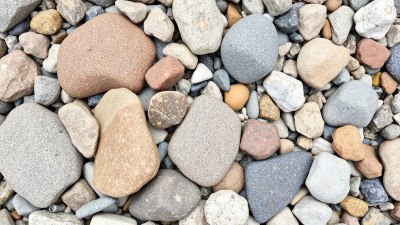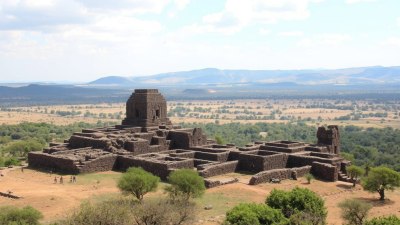Collecting and Cataloging Different Types of Rocks on Hikes
Learn how to collect and catalog various rocks during your hikes with this comprehensive guide.

Image created with Flux Schnell
Hiking is an amazing way to connect with nature, and it offers a unique opportunity to explore the geological diversity of our planet. One engaging activity you can take part in while hiking is collecting and cataloging different types of rocks. This not only enhances your outdoor experience but also allows you to learn about geology while appreciating the beauty of the natural world. In this article, we will delve into the essentials of collecting and cataloging rocks on your hikes, covering everything from the types of rocks you might encounter to effective cataloging techniques.
Rocks can be categorized into three main types: igneous, sedimentary, and metamorphic. Understanding these categories is crucial for any rock collector. Igneous rocks are formed from cooled magma or lava and can be further divided into intrusive and extrusive rocks. Examples of these include granite and basalt, respectively. Sedimentary rocks, on the other hand, are created through the accumulation and compaction of sediments. Common examples are sandstone, limestone, and shale. Finally, metamorphic rocks are those that have undergone a transformation due to pressure and heat, resulting in rocks like schist and marble. Each rock type offers unique characteristics that can help in identification and provides insight into the geological history of the region.
When planning your hike focusing on rock collecting, it's essential to choose a location that is known for its geological variety. National parks, nature reserves, and mountain ranges often have diverse rock formations. Research the area beforehand to see what types of rocks are prevalent. Additionally, consider the local regulations regarding rock collecting, as some areas may have restrictions due to environmental conservation efforts.
Essential Tools for Rock Collecting
Before heading out, pack some essential tools to aid you in your rock collecting endeavors. A durable backpack is necessary to carry your collection while hiking. Include sturdy gloves to protect your hands from sharp edges and rough surfaces. A small rock hammer is useful for breaking apart rocks and extracting smaller specimens. A geologist's hand lens can help you closely examine your finds. Lastly, a sturdy container or bag is vital for storing your collected rocks safely.
Techniques for Collecting Rocks
When you arrive at your chosen site, take your time to survey the area. Look for rock formations and outcrops that catch your interest. Pay close attention to the ground; rocks can often be found lying on the surface. When selecting rocks to collect, consider their colors, textures, and patterns. Aim to gather samples that showcase a variety of characteristics rather than just the most visually appealing pieces.
As you collect, remember to practice responsible sourcing. Only take rocks that are allowed for collection, and avoid disrupting natural habitats. If you're unsure whether it’s permitted, consult local regulations or ask park personnel. Sustainable practices not only benefit the environment but also ensure that future hikers can enjoy the same geological wonders.
Cataloging Your Collection
Once you have gathered your collection, it's time to start cataloging your finds. Cataloging helps you keep track of the rocks you have collected and allows for easy identification and further study. Begin by making a simple spreadsheet or use a rock collection app to keep records of your samples. Include the following details for each rock: the date of collection, location, type of rock, notable features, and any additional notes.
Photographing each rock is also highly recommended. Capture images in natural light to highlight the rocks’ colors and textures. This visual documentation will aid in identification as well as allow you to share your findings with fellow geology enthusiasts. Once you’ve taken photos, consider labeling them with the corresponding catalog number or other identifying information.
Identifying Different Types of Rocks
Identifying your collected rocks can be a rewarding process. There are various resources available, including field guides, websites, and apps, to assist in the identification of rock types. Begin by examining your rocks closely. Take note of the color, grain size, hardness, and any visible layering or texture differences. These characteristics can reveal much about a rock’s history and its formation processes.
For igneous rocks, check for a shiny, glassy surface, which may indicate a volcanic origin. Sedimentary rocks will often exhibit layers or inclusions of fossils, signs of their formation from sediments. Metamorphic rocks can be identified by their banding or foliation, a result of intense pressure and heat.
Sharing Your Findings
After collecting and cataloging your rocks, consider sharing your findings with others. Join a local geology club or participate in online forums focused on rock collecting. Sharing your discoveries not only enriches your knowledge but allows you to connect with fellow enthusiasts. You can also participate in rock shows or mineral fairs to exhibit your collection and to learn from experts in the field.
Moreover, documenting your experiences and findings through a blog or social media can inspire others to explore geology through hiking and rock collecting. Sharing your journey can motivate new enthusiasts to appreciate the outdoors and its geological wonders as well.
Educational Opportunities
Exploring geology can lead to numerous educational opportunities. If the hobby of rock collecting captures your interest, consider attending workshops, field trips, or college courses focused on geology and earth sciences. Many educational institutions and organizations offer programs aimed at enthusiasts of all levels.
Furthermore, engaging with local universities or geological societies can introduce you to professionals in the field. Networking within the geology community may present opportunities for mentorship, collaborative projects, or even scientific research. Delving into geology can open new doors and deepen your understanding of how our planet works.
Safety While Hiking and Collecting Rocks
As with any outdoor activity, safety should be a priority while hiking and collecting rocks. Always inform someone about your hiking plan and expected return time. Carry a map and a compass or GPS device, as trails may not always be well-marked. Bring sufficient supplies, including food, water, and basic first-aid supplies in case of emergencies.
When navigating uneven terrain or rocky areas, wear sturdy hiking boots for traction and support. Be cautious of weather conditions, which may change rapidly. Plan your hike for times where visibility is optimal to mitigate risks associated with navigating new trails.
Furthermore, keep in mind your physical limits. Choose hiking trails that match your skill level and be prepared to alter your plans accordingly. The goal is to enjoy your experience in nature while ensuring your health and safety.
Collecting and cataloging different types of rocks while hiking presents an enjoyable and educational experience that enables a deeper connection with the natural world. By understanding rock types and employing effective collecting and cataloging techniques, hiking enthusiasts can enrich their outdoor adventures. Not only does this hobby encourage a greater appreciation for geology, but it also promotes responsible environmental practices. So grab your gear, hit the trails, and start discovering the incredible world of rocks waiting to be explored!











